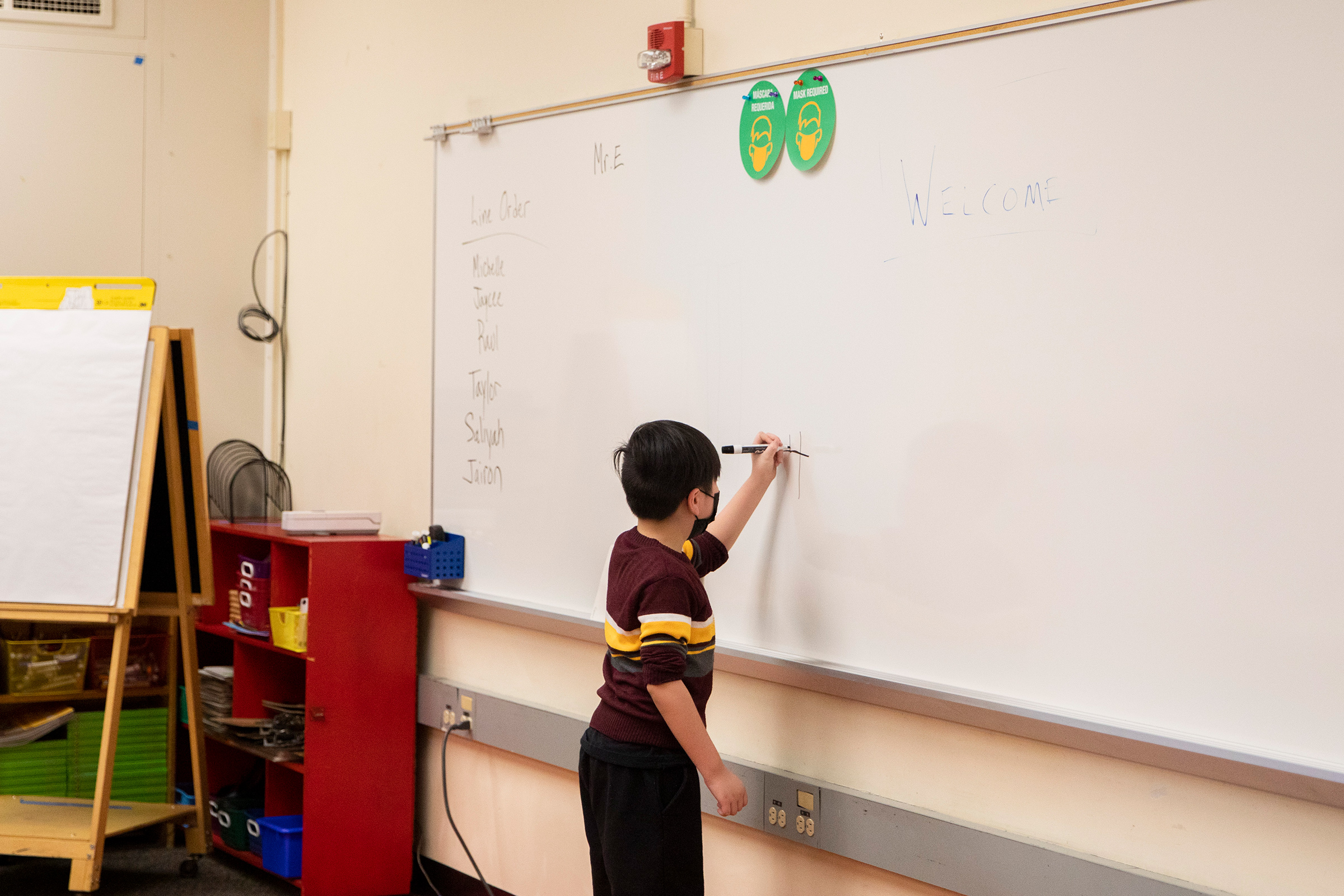
No state saw improvements in students’ math or reading scores between 2019 and 2022—and a majority of states saw declines, according to a new report released Monday.
The test scores, which continue to paint a bleak picture of student achievement during the pandemic, come from the National Assessment of Educational Progress (NAEP), known as “the Nation’s Report Card” and administered by the U.S. Education Department. The NAEP offers the most comprehensive look at student academic progress since the pandemic disrupted schools.
“The results show the profound toll on student learning during the pandemic, as the size and scope of the declines are the largest ever in mathematics,” Peggy Carr, commissioner of the National Center for Education Statistics (NCES), said in a statement.
There were no math improvements in any of the 26 large urban school districts where assessments were given, including New York City, Dallas, Miami, and Los Angeles. The average math score fell five points for fourth-graders and eight points for eighth-graders since 2019—reflecting the largest score declines in more than 30 years, since the NAEP was first administered in 1990.
No state saw improved reading scores at either grade level, though schools operated by the Department of Defense saw an increase in eighth-grade reading scores.
The results emphasize what’s at stake as schools try to help students recover and catch up on learning they missed during the last few years. The assessment looked at fourth- and eighth-grade math and reading. And experts said the “stark” decline in eighth-grade math scores means those students could be missing key math skills at a crucial time as they enter high school and decide what they want to study in college or pursue as a career.
“If left unaddressed, this could alter the trajectories and life opportunities of a whole cohort of young people, potentially reducing their abilities to pursue rewarding and productive careers in mathematics, science, and technology,” said Daniel McGrath, NCES associate commissioner for assessment.
In a press call on Friday, Education Secretary Miguel Cardona called the test results “appalling and unacceptable,” and urged educators and other leaders to prioritize student recovery, especially for the most vulnerable students.
“A once-in-a-generation virus upended our country in so many ways, and our students cannot be the ones who sacrifice the most in the long run,” Cardona told reporters. “We must treat the task of catching our children up with the urgency that this moment demands.”
The assessment surveyed students and found that those who performed better on the tests were more likely to have constant access to a computer, a quiet place to work and a teacher available to help with school work “at least once or twice a week.”
More from TIME
In fourth-grade math, the average scores for Black and Hispanic students declined most, widening the achievement gap between those students and their white peers—a trend that “should be setting off alarms for parents and policymakers,” said Denise Forte, interim CEO of the Education Trust, a nonprofit that advocates for educational equity.
Education Department leaders are calling on districts to do more to help students progress, with strategies that include tutoring and summer enrichment programs. In 2021, the federal American Rescue Plan allocated $130 billion to help K-12 schools reopen and required that districts use 20% of that funding to combat learning loss.
“We have to do more and we have to spend more,” said Roberto Rodríguez, the Education Department’s assistant secretary for planning, evaluation, and policy development. “This is a moment of truth for education.”
More Must-Reads From TIME
- The 100 Most Influential People of 2024
- The Revolution of Yulia Navalnaya
- 6 Compliments That Land Every Time
- What's the Deal With the Bitcoin Halving?
- If You're Dating Right Now , You're Brave: Column
- The AI That Could Heal a Divided Internet
- Fallout Is a Brilliant Model for the Future of Video Game Adaptations
- Want Weekly Recs on What to Watch, Read, and More? Sign Up for Worth Your Time
Write to Katie Reilly at Katie.Reilly@time.com